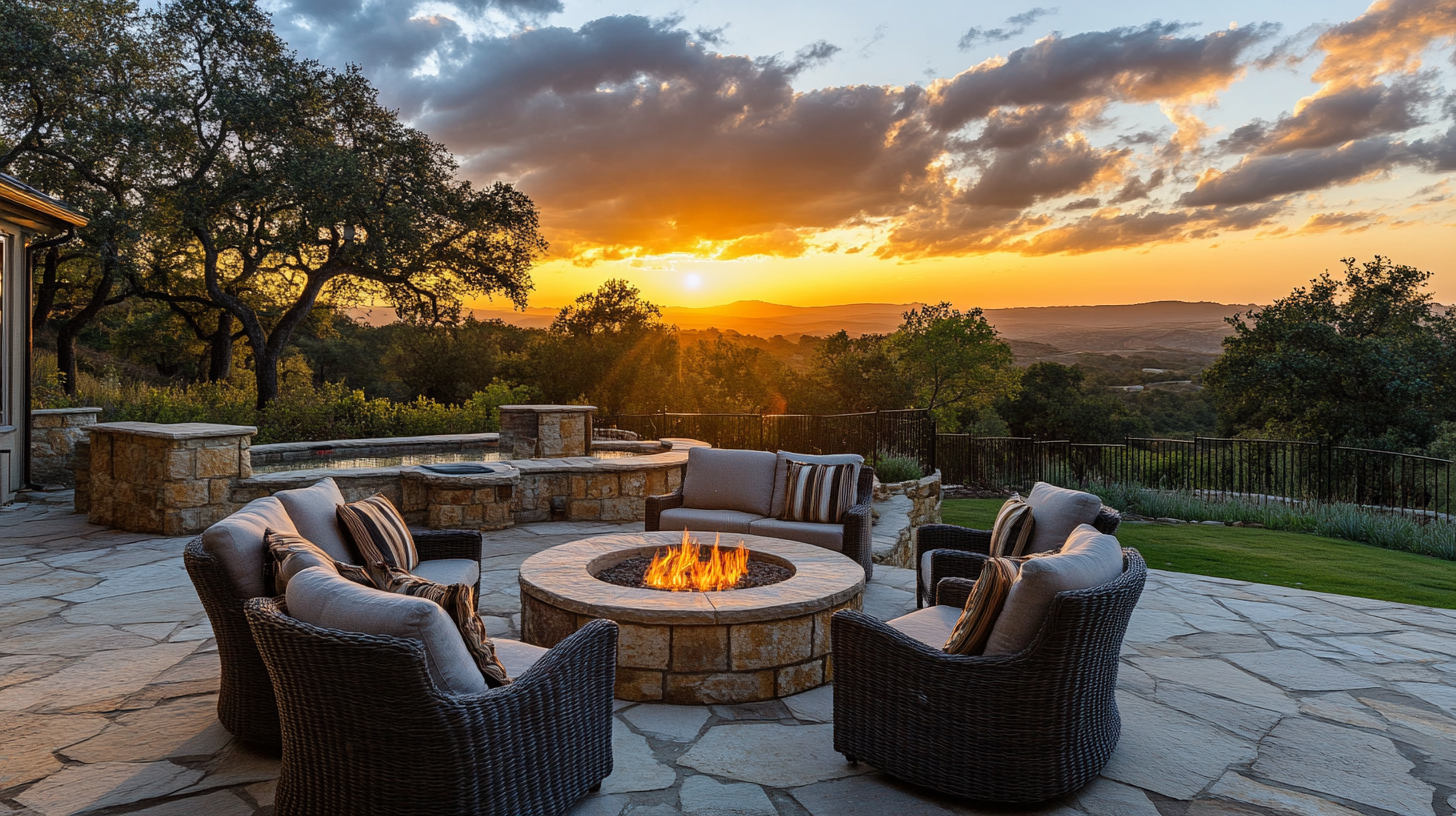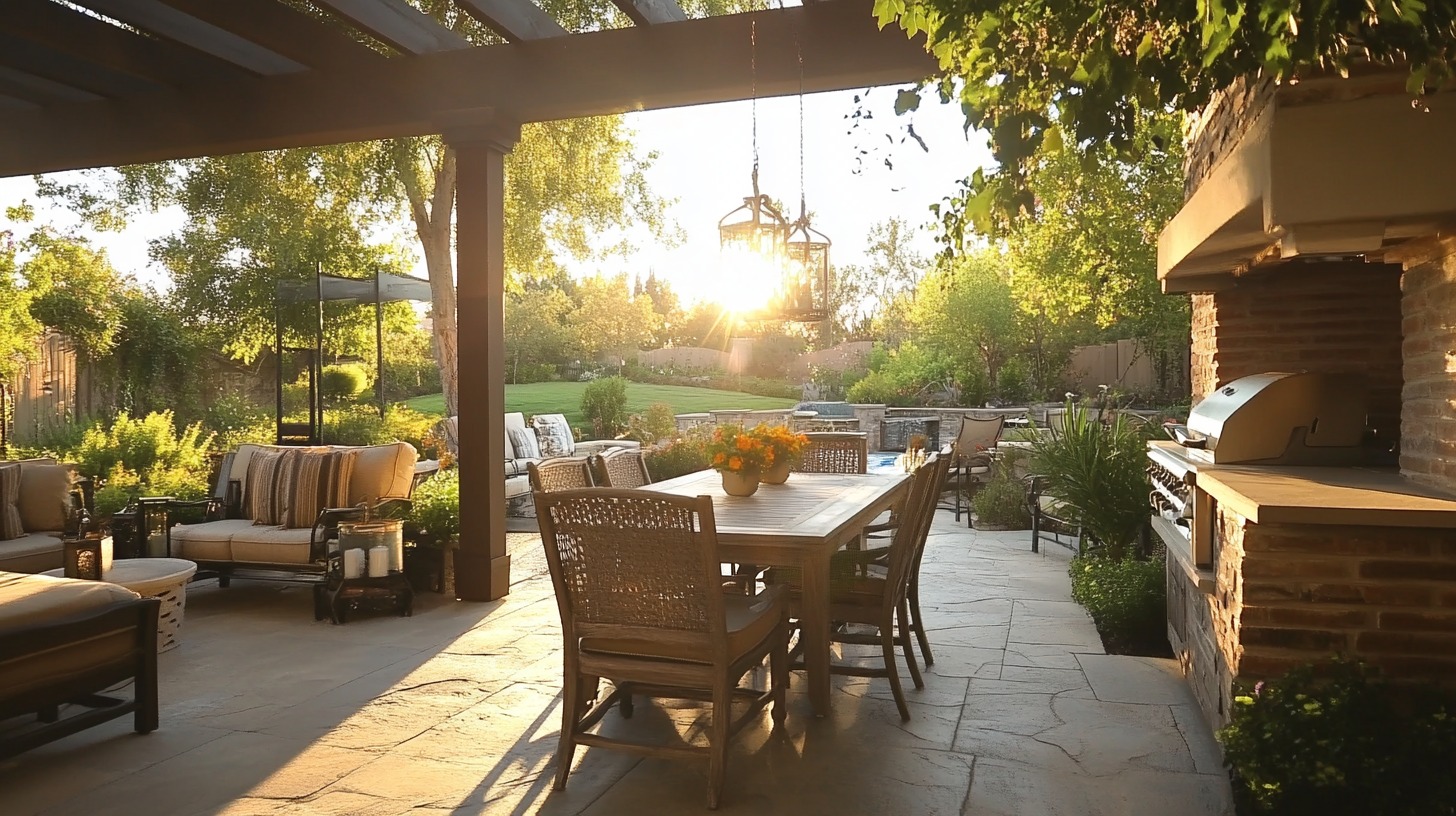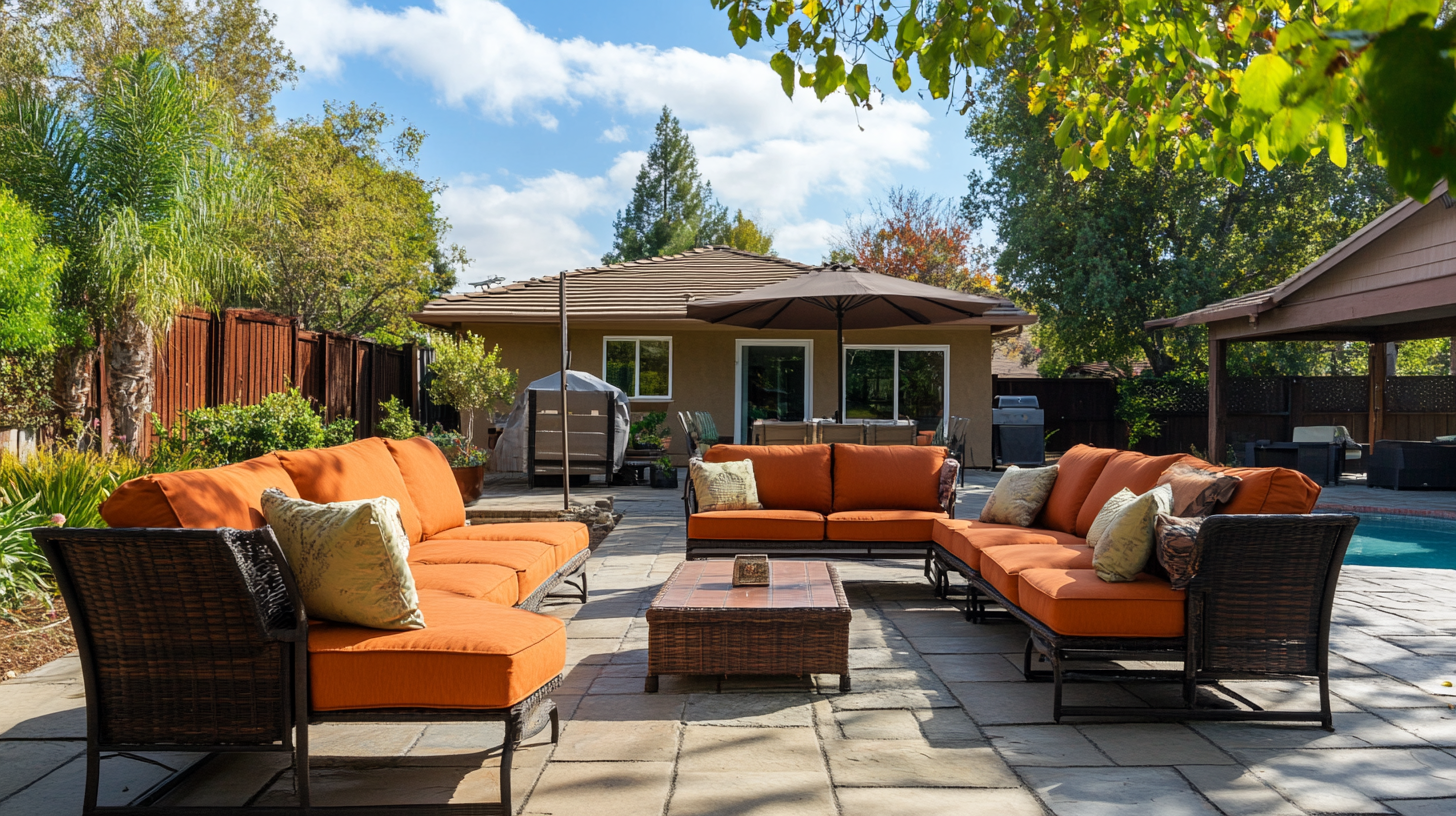7 Essential Tips for Choosing Quality Patio Furniture
When it comes to enhancing outdoor living spaces, choosing the right patio furniture can make all the difference. According to a recent report by the American Society of Landscape Architects, outdoor living spaces have surged in popularity, with 80% of homeowners prioritizing quality patio furniture as a key component for their backyards. This trend emphasizes the importance of investing in durable and aesthetically pleasing pieces that can withstand varying weather conditions while providing comfort for family gatherings and entertaining guests.
Moreover, market research conducted by IBISWorld indicates that the outdoor furniture industry has seen steady growth, with consumer demand for quality patio furniture rising significantly over the past few years. As homeowners increasingly seek to create outdoor retreats that reflect their personal style, selecting the right furnishings is crucial not only for functionality and longevity but also for enhancing the overall ambiance of their outdoor spaces. In this blog, we will explore seven essential tips that will guide you in choosing quality patio furniture that aligns with your lifestyle and design preferences.

Assessing Material Durability: Choosing Between Wood, Metal, and Synthetic Options
When it comes to selecting patio furniture, assessing material durability is crucial for ensuring your investment stands the test of time. The three primary material types—wood, metal, and synthetic—each bring unique benefits and challenges. Understanding these can help you create an outdoor space that not only looks inviting but also withstands the elements. Wooden patio furniture, such as teak or cedar, exudes classic charm and natural beauty. It offers excellent durability with proper maintenance, such as regular sealing and treatment to protect against moisture and sunlight. However, wood can be susceptible to warping or cracking if left untreated, and it may require more upkeep compared to other materials. Consider the climate in your area; if you live in a wet or humid environment, you might need to invest more time in caring for wooden pieces to ensure their longevity. On the other hand, metal furniture, specifically aluminum or stainless steel, provides a modern aesthetic and robust durability. Aluminum is lightweight and resistant to rust, making it ideal for various climates. Stainless steel, while heavier, offers high strength and a sleek look. Both options require minimal maintenance, but they can become hot in direct sunlight. If comfort is a concern, look for padded cushions or consider a material that mitigates heat retention. Finally, synthetic materials, like resin wicker or high-density polyethylene (HDPE), mimic the look of natural materials but offer superior resistance to fading, cracking, and mold. These options are often lightweight, easy to clean, and require little maintenance, making them perfect for anyone seeking a hassle-free outdoor experience.

Understanding Style and Design: Matching Furniture with Your Outdoor Aesthetic
When it comes to selecting patio furniture, understanding your outdoor aesthetic is crucial. A cohesive design can enhance the overall appeal of your outdoor space, creating an inviting atmosphere for relaxation and entertainment. According to the 2023 Outdoor Furniture Market Report, 65% of consumers prioritize aesthetics when purchasing outdoor furniture, indicating that style significantly influences buying decisions.
One way to match your furniture with your outdoor aesthetic is by considering the existing elements of your space. Pay attention to the architecture of your home, the landscaping, and even the color palette of your outdoor decorations. For instance, if you have a modern home with clean lines, selecting sleek metal or glass furniture can complement that style effectively. Conversely, a rustic-themed backyard might benefit from wooden pieces that embody a more natural look. Research suggests that consumers are willing to spend an average of 30% more on outdoor furniture that aligns with their overall design vision, highlighting the importance of thoughtful selection.
Additionally, material choice plays a significant role in harmonizing style and functionality. The 2022 Outdoor Living Report notes that 70% of homeowners prefer durable, low-maintenance materials like teak, aluminum, and synthetic wicker for their patio furniture. These materials not only contribute to the aesthetic appeal but also ensure longevity against the elements. By considering both visual elements and material durability, you can curate an outdoor space that reflects your personal style while standing the test of time.

Evaluating Comfort: The Importance of Cushions and Seating Design
When selecting patio furniture, the comfort of cushions and seating design is paramount. After all, your outdoor space should be an oasis for relaxation and enjoyment. High-quality cushions can make all the difference in transforming a mere seating area into a cozy retreat. Look for options filled with materials that provide both support and softness, such as high-density foam or polyester fiberfill. These materials not only enhance comfort but also ensure longevity, allowing you to enjoy your outdoor furniture season after season.
In addition to the quality of the cushions, the overall design and ergonomics of the seating also play a crucial role in promoting comfort. Consider the height and depth of chairs and sofas; the right proportions will allow you to sit back and unwind. Features like curved backs or angled seats can significantly impact how relaxing your outdoor experience will be. Ensure that the furniture is designed to invite you to sit and stay for a while, whether you’re hosting friends for a barbecue or enjoying a quiet evening under the stars. By focusing on these aspects, you can create a patio that feels just as inviting as your indoor living spaces.

Weather Resistance: Selecting Furniture That Can Withstand the Elements
When it comes to selecting patio furniture, the pivotal aspect to consider is weather resistance. According to recent surveys, over 70% of consumers report that durability is their foremost criterion when choosing outdoor furniture. Pieces that can withstand harsh elements not only enhance the longevity of your investment but also keep your outdoor space looking appealing year-round.
Materials such as high-density polyethylene (HDPE) wicker, aluminum frames, and teak wood are leading the charge in durability. HDPE wicker, for instance, is engineered to resist fading, cracking, and peeling from extensive sun exposure, ensuring that your chairs and tables maintain their integrity. Similarly, aluminum patio furniture is lightweight yet incredibly resilient, making it ideal for regions with unpredictable weather patterns. Reports indicate that aluminum frames can last up to 20 years with proper care.
Additionally, assessing the fabric is crucial; solution-dyed acrylic fabrics are increasingly popular due to their ability to repel water and resist mold and mildew. With more consumers leaning toward eco-friendly options, this fabric not only offers durability but also aligns with sustainable practices. In fact, industry experts note a 45% increase in the demand for environmentally friendly outdoor furniture options in the past two years.
Choosing weather-resistant patio furniture ultimately ensures that your outdoor oasis remains comfortable and stylish, regardless of the season. By prioritizing durability and material quality, you’re investing in a space that brings joy and relaxation for years to come.
Budgeting for Quality: Finding the Balance Between Cost and Longevity
When it comes to selecting patio furniture, understanding how to budget for quality is crucial. Many consumers often fall into the trap of buying cheaper options that may save money upfront but lead to higher costs down the line due to frequent replacements. Balancing between cost and longevity is not just about finding the lowest price; it's about valuing your investment and ensuring that the furniture will stand the test of time.
Investing in quality patio furniture often means considering materials that can withstand the elements. While high-quality options may come with a higher initial price tag, materials like teak, aluminum, or synthetic wicker offer durability and resistance to weathering. Evaluating the long-term benefits of these materials can lead to more savings over time, as they require less maintenance and won’t need replacement after just a few seasons.
Additionally, think about the overall use and longevity of the furniture. If your patio sees frequent gatherings or heavy usage, it makes sense to prioritize sturdier options. While searching for bargains, keep in mind that warranties can also play a significant role in assessing the value of your purchase. A product with a solid warranty often indicates confidence from the manufacturer and can provide peace of mind, making the higher price worth it in the long run. Thus, by focusing on quality and considering your specific needs, you can successfully navigate your budget while ensuring your patio remains a comfortable and stylish outdoor space.
